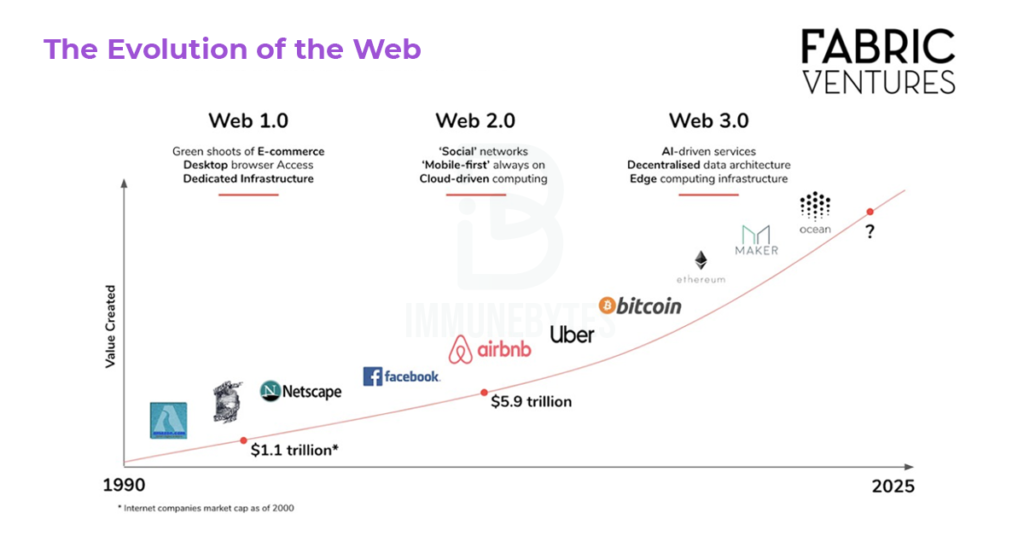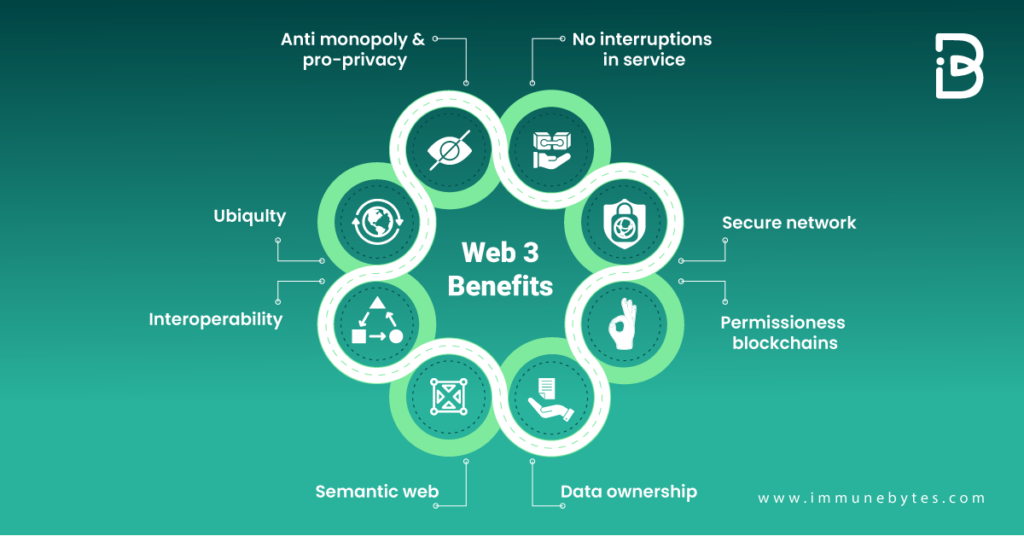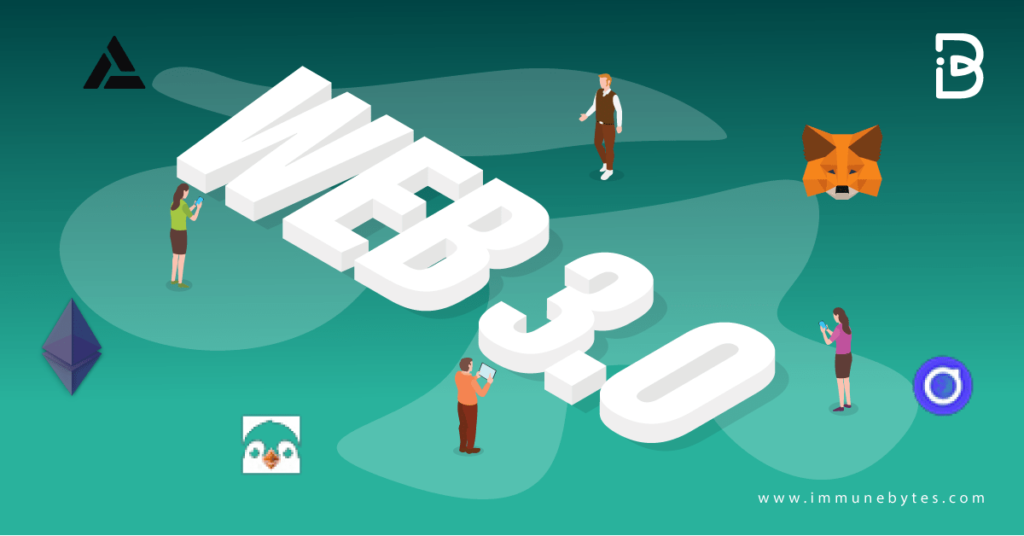The internet has undoubtedly become a necessity for almost every individual on this planet. As a matter of fact, it is quite difficult to imagine life without the internet at your disposal. Moreover, a global pandemic has further made us realize how vital the internet can be in times of crisis.
However, the internet we know today is quite murky when it comes to data safety. The web has grown manifold in the years since its inception. Many new forms of the internet have developed before ultimately leading to the introduction of Web 3.0. The future of the internet that everyone is talking about these days.
The following blog will offer you a detailed impression of Web3.0 and how blockchain is driving the growth of web 3.0. Let’s get started!
What is Web 3.0, and Why Does it Matter?
Table of Contents
What technology benefits more than 3 Billion people for 80% of their waking hours every single day? Web 2.0.
Web 2.0, coined between 1999 and 2004, moved the world on from static desktop web pages designed for information consumption and served by expensive servers to interactive experiences and user-generated content that brought us Uber, Airbnb, Facebook, and Instagram.
While the Web 2.0 wave is still bearing fruit, we are also observing the first shoots of growth emerge from the latest paradigm in the web’s development journey with the arrival of Web 3.0.

As hard to believe as it might seem, Web 3.0 is a leap forward to open, trustless and permissionless networks.
- ?Open? as they are built from open-source software, built by an open and accessible community of developers, and executed in full view of the world.
- ?Trustless? in the sense that the network itself allows participants to interact publicly or privately without a trusted third party.
- ?Permissionless? as both users and suppliers, can participate without authorization from a governing body.
Web 3.0 has the power of technologies such as artificial intelligence, IoT, and blockchain. The third generation of the web has a formidable focus on innovative technologies such as AI and machine learning. In addition, it also focuses on empowering better prospects for security.
Where Web 2.0 was driven by the advent of mobile, social, and cloud, Web 3.0 is built largely on three new layers of technological innovation: edge computing, decentralized data networks, and artificial intelligence.
Additional Resource: WEB3 VS METAVERSE
Why Web 3.0?
The most crucial thing web 3.0 offers is that it brings back the human aspect by providing privacy and security to the users rather than making corporations more powerful than ever.
The vision of Web 3.0 changed in the last 7-8 years. Initially, it was simple, but with the introduction of blockchain and Bitcoin, the vision and approach have changed completely. Now, Web 3 focuses more on the decentralized features that the blockchain has to offer.
This image gives an overview of the features that web 3.0 offers. Take a look:

Driving towards Decentralization
The internet people use in present times is more like a standalone computer. All the data on the internet is subject to centralized storage and management through servers of specific trusted institutions. And the setbacks associated with centralized power have been evident with prominent examples in the past. The global financial crisis of 2008 showed the crevices in centralized power, thereby setting up the stage for decentralization.
The decentralized architecture of web 3.0 aims to resolve the issues emerging from centralized power and control. Some of the formidable issues addressed by web 3.0 would refer to user trust, transparency, and privacy.
With web3.0 centralized servers will be replaced with information present on multiple computing devices, acting more like a peer-to-peer internet with no single authority. Web 3.0 examples can show how data would be interconnected in a decentralized manner along with opportunities for machines and users to interact with data. At the same time, the semantic web and artificial intelligence would serve as the main pillars underlying the third-generation web.
How is this decentralization possible? The only answer that comes to mind is Blockchain!
Significance of Blockchain in Web 3.0
Networks in the third generation of the web exhibit interoperability, and automation by leveraging smart contracts, seamless integration, and censorship-resistant storage of P2P data files. This makes it quite clear that blockchain would serve as a key driving force for the next generation of the internet. It plays a crucial role in transforming the conventional approaches to data storage and management.
In layman’s terms, blockchain offers a unique collection of data or a universal state layer, which provides the opportunity for developing a value settlement layer on the internet. The state layer helps in sending files in a copy-protected manner to enable effective P2P transactions without any intermediaries. The current slew of DeFi protocols is just the tip of the iceberg.
Due to its role in assisting developers with decentralized apps, Ethereum is one of the more popular Web3 blockchains, meaning that some investors who are buying up the crypto are in it for its long-term benefits.
The arrival of Bitcoin was one of the first points for outlining web 3.0. The Bitcoin blockchain and other protocols helped in creating networks where hackers would have to break into multiple houses all over the globe for accessing data in one house.
Blockchain is truly the foundation for web 3.0, especially when you think of how it transforms data structures in the backend of the web.
From a more technical perspective, one can think of web 3.0 as a collection of blockchain-based protocols dedicated to altering the backend wiring of the internet. For us, it is easy to consider blockchain as a distributed world computer that will soon change the way we look at the internet.
Recommended: Web3 Audit
Blockchain in Web 3.0 Examples
The transition from Web2.0 to Web3.0 has already begun with the introduction of decentralized applications (dApps). And as we’ve been saying, this transition is inevitable, and it is only time when mass adoption of these apps will take place.

To really get a clearer picture, here are a few examples of use cases where blockchain is being integrated with Web3.0.
Social Networks
Social networks play a crucial role in our lives and transform how we communicate, interact and form communities. Web 3.0 will completely transform how social networks work. With the use of blockchain, it will not be possible for social platforms to be limited in any way.
Not to mention these social networks have full authority over the data that is shared and stored on the platform. With Web 3.0 social networks, the complete landscape will change?platforms such as Sapien, Steemit, Sola, Indorse, onG. Social, PROPS Project, Yours, etc., look promising. All of them utilize blockchain and next-generation technologies such as artificial intelligence.
Exchange Services
When it comes to exchanging services, centralization is not at all effective. The biggest failure that we can see is when the exchange Mt. Gox got hacked. The hack cost them $460 million worth of Bitcoin in 2014. Its value would be at least 1000x more now.
Decentralized exchanges are slowly growing in popularity as they provide a seamless user trade experience without worrying about any hacks or transparency. This also means that there is no centralized authority and no conflict of interest from the owner’s side. Some examples include IDEX and EOSFinex.
Storage
The current state of data storage can be changed with Web 3.0 merged with blockchain and big data. The basic idea behind decentralized storage is all about sharing files and data through a peer-to-peer connection.
The security in decentralized storage is also top-notch as the sender can simply encrypt the files and then send them to the receiver. It can also break the files into pieces and then send them. Some examples of decentralized storage include Storj, Sia, Filecoin, etc.
Insurance and Banking
Insurance and Banking are the most corrupt sections of our society. Without getting into it much, we can be sure that the current system is broken and needs to be more transparent and secure for the users to thrive in it.
Both the insurance and banking sector can see a revolution with blockchain technology. There are many use cases of this technology, and the impact can be seen earlier than thought. The transformation will take place through the use of blockchain features, including transparency, security, and retractability. Some examples include Everledger, AiGang, Cashaa, and Safe Share.
These examples are of course not just it, there are a lot of use cases for Blockchain in Web3.0 including gaming, messaging, video, music streaming, art, and a lot more.
How Does? Crypto? Fit in?
Where there’s blockchain, there’s crypto!
When it comes to Web 3.0, you’ll find that cryptocurrency is frequently mentioned. This is because many of the Web 3.0 protocols rely heavily on cryptocurrencies. The blockchain building block behind Web3 is the technology behind many major cryptocurrencies and also NFTs.
Web 3.0 tokens are digital assets that are associated with the vision of creating a decentralized Internet. These protocols may provide various services, such as computation, bandwidth, storage, identification, hosting, and other online services formerly provided by cloud providers.
For instance, the Livepeer protocol, which is based on Ethereum, provides a marketplace for video infrastructure providers and streaming applications. Similarly, Helium incentivizes consumers and small businesses to supply and confirm wireless coverage and send device data through the network using blockchains and tokens.
Reports suggest that Ethereum could likely be the most popular Web 3.0 blockchain given its role in helping developers of dApps. This will, in turn, put more focus on Ether. There are other crypto projects such as Polkadot, Helium, and Kusama, among others that are already working to improve the Web 3.0 experience.
Web 3.0 also promises to blend well with the metaverse making it easier to buy and sell NFTs, which represent your ownership of a virtual good, with cryptocurrencies.
Closing Thoughts
The new internet will provide a more personal and customized browsing experience, a smarter and more human-like search assistant, and other decentralized benefits that are hoped will help to establish a more equitable web.
The role of blockchain in web 3.0 is quite clear from basic observations about the third generation of the web. Blockchain arrived as a formidable force and transformed conventional enterprise processes with its distinct traits. However, the most significant trait of blockchain which presents an ideal foundation for web 3.0 is decentralization.
When Web 3.0 inevitably arrives the internet will become exponentially more integrated into our daily lives and with blockchain curbing the setbacks of Web 2.0, it will be exciting to see how this revolution will transform our lives!
About Us
ImmuneBytes is a Blockchain security firm that employs the industry’s best tools and practices to provide a comprehensive smart contract audit. We have a team of robust and experienced security professionals who are adept at their niches and provide you with quality service. We have worked on 175+ projects spread across the world on different Blockchain frameworks with some of the industry’s top firms and we continue to unfold the decentralized movement.
We are also providing consultancy, coming up with a bug bounty platform, and also an insurance product to provide our clients with a hassle-free security product catalog. Stay tuned.

